Killer whale habitat expansion approved for SeaWorld San Diego
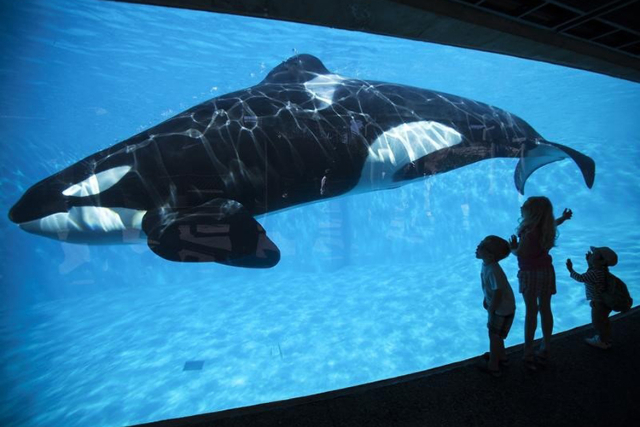
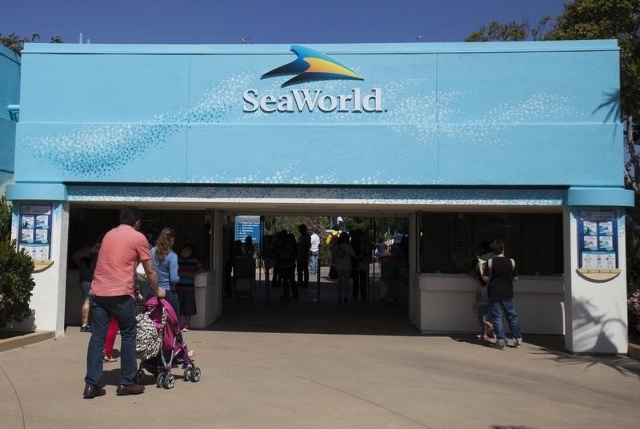
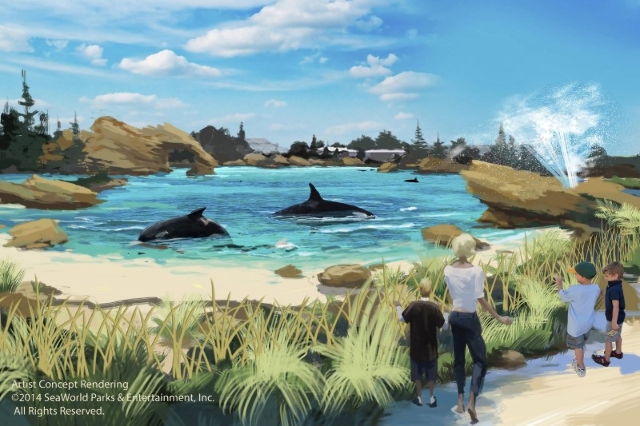
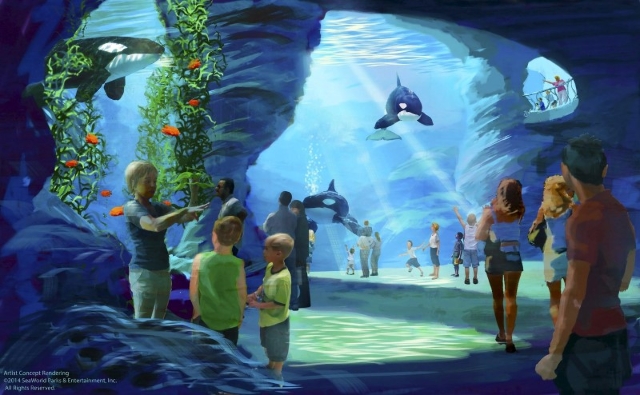
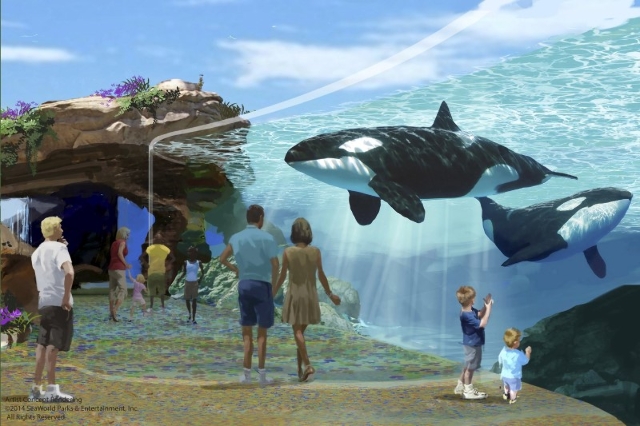
LONG BEACH, California — The California Coastal Commission unanimously approved SeaWorld’s $100 million plan to double the size of its killer whale habitat, despite the pleas of animal activists to release the behemoths into the ocean.
The approval comes with a key condition: SeaWorld cannot breed any of the 11 whales in captivity in California.
The decision came Thursday evening after hours of impassioned speeches by hundreds of supporters and opponents of the project. Interest in orcas, and the conditions they live under at SeaWorld, rose after the 2013 documentary “Blackfish” aired on CNN.
The hearing before the Coastal Commission had to be moved to a convention center to accommodate the crowd of some 650 people.
Reaction to the decision from both sides was swift.
SeaWorld issued a statement saying it was “disappointed” with the breeding condition and “will carefully review and consider our options.”
“Breeding is a natural, fundamental and important part of an animal’s life,” the statement said, “and depriving a social animal of the right to reproduce is inhumane.”
But animal rights groups praised the commission’s vote.
“SeaWorld has admitted that it intended to breed even more orcas to fill the new tanks, but the commission’s action today ensures that no more orcas will be condemned to a nonlife of loneliness, deprivation and misery,” PETA spokesman Ben Williamson said in a statement.
“SeaWorld is a sea circus, and the orcas are its abused elephants. PETA wants SeaWorld to stop building tanks and start emptying the ones they’ve got by sending the orcas to coastal sanctuaries, where they’d finally have some semblance of a natural life.”
The Animal Legal Defense Fund also issued a statement saying the commission voted “to do the right thing for orcas” by making the breeding ban a condition of the expansion.
“Science overwhelmingly shows that orcas neither thrive nor breed well in captivity,” ALDF executive director Stephen Wells said in the statement. “It is cruelty pure and simple to keep large, intelligent, complex and social sea mammals in tiny tanks and force them to entertain consumers whose dollars would be better spent on conservation of orcas in the wild.
“The commission’s decision confirms that SeaWorld’s days of breeding and warehousing orcas for entertainment are numbered.”
‘Bigger, better home’
Supporters of the project told the commission that SeaWorld generates public interest in the creatures and that they are well cared for. Trainers spoke of their affection for the orcas, referring to particular whales by name.
“The whales at SeaWorld don’t need anti-depressants,” said SeaWorld’s chief veterinarian, Hendrik Nollens. “I speak on behalf of the 150 members on my team. We care for these animals as if they were our family. We have nothing but the whales’ best interests at heart.”
He urged the commission to approve “a bigger, better home for our whales.”
SeaWorld San Diego President John Reilly called the issue before the panel “a land use decision,” not a moratorium on zoos and aquariums. He said the project is a good use of coastal land, inspiring the next generation of marine biologists.
Opponents included animal activists who said orcas become aggressive and break their teeth by biting the sides of their tank. They said such behavior is not seen among orcas in the wild.
“Take a moment and think like a whale,” asked one young woman, who pleaded for a “no” vote.
The opponents repeatedly chanted, “Free, free, set them free,” and carried placards referring to the killer whales as slaves and prisoners. “Life in a concrete box is no life,” said one sign. “SeaWorld hurts orcas,” said another.
SeaWorld backers sporting bright blue T-shirts waved placards that read “Blue World Yes!” on the front — a nod to the name of the proposed expansion — and “Educate, Inspire, Conserve” on the back.
Among the project opponents: Zoey Lambe-Hommel, 7, who put on an orca costume and came with her older sister, Leah, and their dad, Steve Hommel. Zoey said whales are wild animals and should not be kept in “swimming pools.”
“It’s cool to see them, but it’s not the right thing to do,” she said. “I want to protect the orcas. They’re living animals, they’re not pets.”
Her sentiments were shared by Pamela Anderson. “No whale is happy in a bathtub,” said the “Baywatch” actress, who wore a white T-shirt that read “SeaWorld kills.”
Eleven orcas, the largest members of the dolphin family, are kept at SeaWorld’s Shamu the Killer Whale exhibit in San Diego, which was built in 1995. Eight of them were born in captivity.
SeaWorld wants to expand the pool from 5.8 million gallons to 9.6 million gallons for a new exhibit it calls “The Blue World.” The expansion includes orca-friendly pools 50 feet deep that contain spots where the killer whales can rub and scratch themselves.
The Coastal Commission staff recommended the project be approved with some conditions, chief among them: SeaWorld cannot populate the pools with orcas caught in the wild and cannot use genetic material from wild orcas to breed killer wales in captivity.
The commission oversees development along the coast, and SeaWorld falls under its bailiwick because it is along San Diego’s bayfront.
“This enlarges and updates the killer whale tanks at SeaWorld San Diego,” the commision’s staff report said. “It is controversial due to ongoing debate over the treatment of killer whales in captivity, particularly exhibits. The 2013 documentary, ‘Blackfish,’ exposed the stressful conditions under which orcas are captured in the wild and kept in captivity.”
“Blackfish,” a documentary by Gabriela Cowperthwaite that aired on CNN, told the story of Tilikum, a 12,000-pound bull orca kept at SeaWorld in Orlando. Tilikum, captured off the coast of Iceland, has sired 21 calves in captivity, but also has killed three people, the most recent being trainer Dawn Brancheau in 2010.
Anderson and other protesters said they feared SeaWorld would breed more whales in an expanded pool.
SeaWorld officials have denied plans to breed killer whales or expand the population in San Diego. SeaWorld has said the expansion would benefit the 11 resident orcas, which range in age from 1 to 50.
At one point during Thursday’s hearing, though, SeaWorld said it would agree to a limit of 15 orcas and that it was opposed to any limitation on breeding.
If the orcas were set free in the wild, SeaWorld says, they would suffer the same fate as Keiko, the star of the film “Free Willy.” In other words, they would quickly die.
‘This is torture’
The expansion of SeaWorld’s killer whale habitat is the biggest issue the Coastal Commission has faced in its 40 years. The commission received some 200,000 emails and 50,000 letters and moved its regularly scheduled meeting from Long Beach City Hall to the Long Beach Convention & Entertainment Center to accommodate the crowd. Every one of the 500 seats was taken, and an overflow crowd of about 150 people stood outside.
Those writing letters in favor of the expansion project included elected officials, aquarium, theme park and entertainment groups, and other business interests. Those opposed included animal activists led by groups such as PETA and the Animal Legal Defense Fund.
There are 56 orcas in captivity worldwide, with 24 of them under SeaWorld’s care. SeaWorld also operates parks in San Antonio, Texas, and Orlando, Florida.
John Hargrove, a former orca trainer who appeared in “Blackfish” and wrote “Beneath the Surface: Killer Whales, SeaWorld, and the Truth Beyond ‘Blackfish,'” urged the commission to deny the expansion, saying it won’t offer “meaningful improvement” to the lives of the whales.
“Caging and enslaving these animals so you can have a fun day at SeaWorld is not the answer,” Hargrove said. “Captivity is still captivity no matter how gentle the jailer or the size of the cell.”
Anderson told the commission the project is “designed to enhance the tourists’ experience, not the animals’,” and that construction on the tanks would stress the whales.
“This is torture,” she said. “SeaWorld is clinging desperately to the past. We all know captive orcas go insane and suffer terribly when separated from their families.”
But Nollens, SeaWorld’s senior vet, told the commission the whales there “are loved and cared for like no other animals.”
“We don’t separate calves from mothers. We don’t collect orcas from the wild. Whales at SeaWorld are not bored. Whales at Sea World are not stressed. Not one whale is receiving anti-depressants.”
SeaWorld San Diego President Reilly told the commission it has received 52,000 letters of support and has the backing of more than 300 zoos and aquariums.












